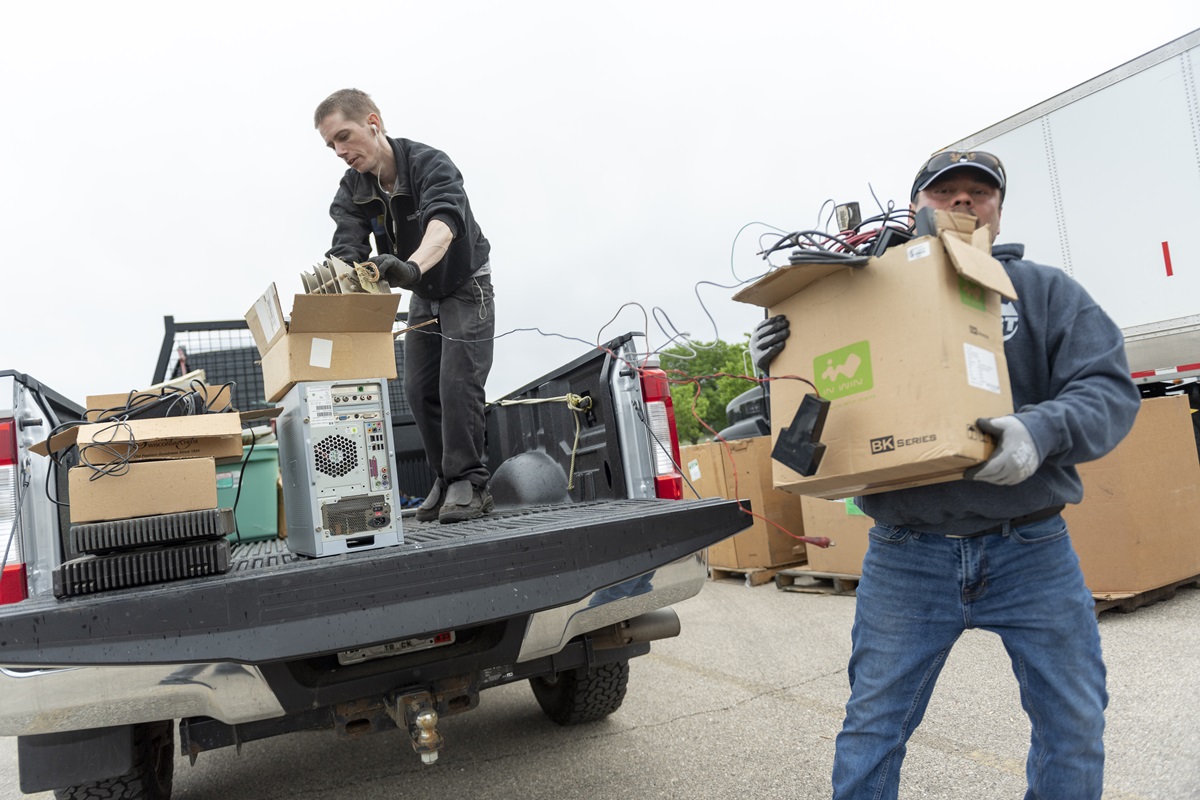
E-Cycle Wisconsin recorded its highest number of collection sites and events in the latest program year, such as this 2022 collection event in Madison, Wisconsin. | Photo by David Nevala, courtesy of E-Cycle Wisconsin
E-Cycle Wisconsin reached a long-sought milestone last year: the highest number of collection sites and events in its 14-year history.
The latest report from the Wisconsin Department of Natural Resources, which administers the state program, covers what E-Cycle calls its “transition year,” during which it shifted away from a July-June program year schedule and instead aligned with the calendar year. As such, the report covers an 18-month period, from July 2022 through December 2023.
During the longer program year, collectors brought in 28.8 million pounds of electronics, up from 23.1 million pounds during the prior program year. But the increase was only because of the longer program year, and when adjusted for an apples-to-apples comparison, collectors brought in 19.2 million pounds during the latest program year, down 17%.
The program schedule change was one of many recent adjustments to the program that were driven by stakeholder concerns over recycling access and affordability, consumer education and other issues. The updates came through legislative action as well as regulations crafted by the Department of Natural Resources, which oversees the state program.
Among the changes was a substantial increase in the amount of e-scrap collection sites and events open to the public, in part due to a grant program approved by the legislative action in 2021. During 2022 and 2023, the agency supported 30 one-day collection events and awarded $135,000 to projects that created three permanent e-scrap collection sites in two counties.
Even when revising the numbers down to account for the longer program year, the state program saw a record year for collection access.
“For the first time, all 72 Wisconsin counties had at least one registered collection site or event,” the agency wrote.
Another change during the last program year was an expansion of the list of devices accepted through the state program. In July 2023, the program added in cell phones, video game consoles and battery-powered accessories for phones and video game devices. Those equipment types joined the traditional categories of TVs, computers, monitors and printers. The list was further expanded by legislation approved in March 2024 to include peripheral devices used with video displays.
The March legislative change made a major shift in how the program’s recycling targets are set. Up until now, the state used a formula that set recycling targets based on the weight of new devices a manufacturer sold in the state three years prior. But starting this year, the program moved to a system that ties each manufacturer’s targets directly to the amount of that manufacturer’s devices that were recycled through the state program two years prior.
The target formula change addresses a “longstanding DNR recommendation,” the agency wrote. Collection target methodology is a hot topic for state programs and OEMs, and Wisconsin joined Minnesota, Illinois and South Carolina in moving away from the pounds-sold target formula.

